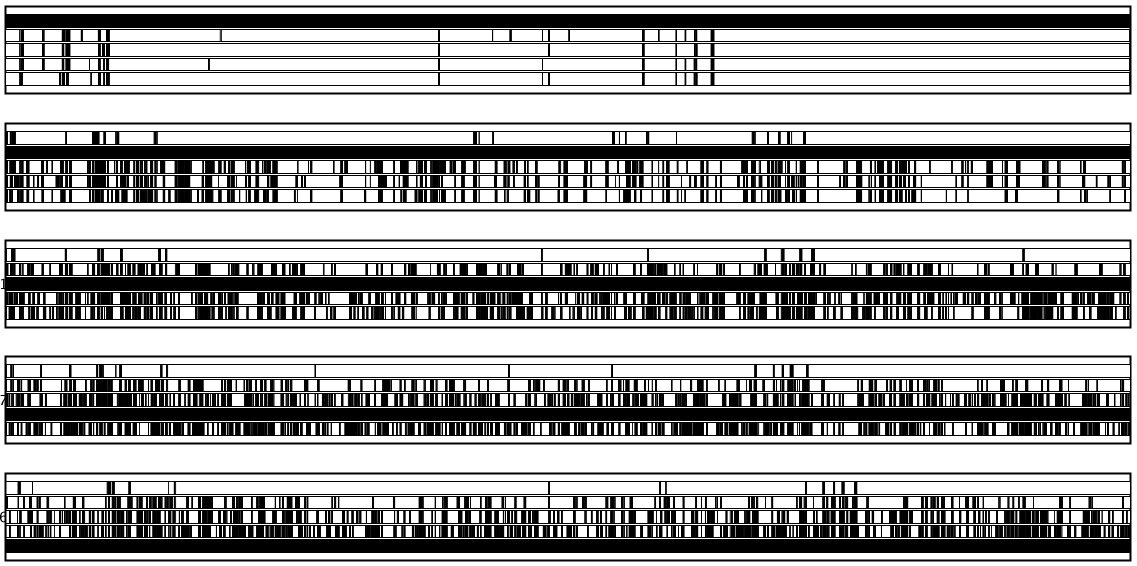
That’s what she said
A computational approach to analysing structure and timing in stand-up comedy
PhD Diss., Queen Mary University of London, Jan. 2021. Supervised by Prof. Elaine Chew (IRCAM, France) and Dr Rebecca Stewart (Imperial, UK).
How do stand-up comedians balance preparation and spontaneity? The only way to appreciate how much of a performance is variable is to compare multiple performances of the same show. My PhD introduces a computational methodology for studying patterns in live performance by looking at patterns in show transcripts and laughter. Exactly repeated subsequences are located using a simple algorithm, making performer repetition and variation visible for the first time.
Subsequence matching was applied to the live shows of two comedians, as well as one show recorded in the lab, to establish how comedy material evolves over time, how it remains the same and how the timing of repeated material reveals its structure.
In this visualisation box (A) highlights a stable area of matching, synchronised material, (B) an addition of material in Show 3 (08Apr17) not repeated in other shows and (C) a new section of material added in Show 3 that is kept in subsequent performances.
Location of matching sequences in show time in performances by established comedian SP.
Both comedians repeated disfluencies, speech “errors” such as UMM and ERR, in sequences present in multiple performances. The less experienced comedian had less obvious sections in their speech timing.
Both performers had the most synchronisation at the end of their performances.
This graph shows how similar the start of matching sequences were in different performances. The more synchronised, the closer to zero. At the end of the show, there is a sharp convergence towards zero.
I also studied audience laughter and its impact on speech. Tight speech timing in a joke, similar even when presented to different audiences, was replaced by slow, regular speech in the lab (20Nov2018, the last row in the graph). The variable audience laughter was less disruptive to the speech of the comedian studied than was total silence.
NB: This research is currently embargoed while it is prepared for publication, but I am happy to discuss results one-to-one. Please get in touch if you’d like to know more.
Speech timing is slower with fewer gaps in a joke performed in the lab (bottom row) compared to its performance in three live shows.



